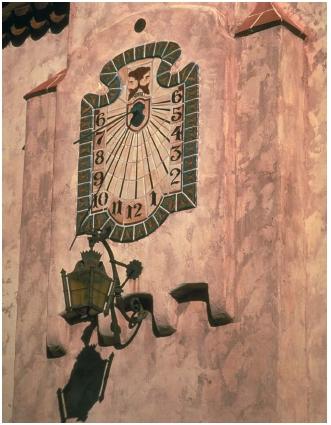Time
Time is a measurement to determine the duration of an event or to indicate when an event occurred. For example, one could say that it took an object 3.58 seconds to fall, indicating how long it took for that event to occur. Or, one could say that English physicist Isaac Newton was born on December 25, 1642, telling when the event of his birth took place.
A number of units are used to measure time, including seconds, minutes, hours, days, weeks, months, and years. In the SI system (International System of Units) of measurement used in science, the standard unit of measurement is the second. The second can be subdivided (as can all SI units) into milliseconds, microseconds, and so on.
Time measurement
Humans measure time by observing some natural phenomenon that occurs very regularly. Until recently, those natural phenomena were all astronomical events: the rising and setting of the Sun, the Moon, and stars.
We know, for example, that the Sun rises and sets every day. One way to measure time is to call the time between two successive appearances of the Sun a "day." Then, an hour can be defined as 1/24 part of a day; a minute as 1/60 of an hour; and a second as 1/60 of a minute.
Solar time, which is based on the motion of the Sun, is not the only way of measuring time, however. One might keep track of the regular appearance of the full Moon. That event occurs once about every 29.5 solar days. The time between appearances of new moons, then, could be used to define a unit known as the month.
One also can use the position of the stars for measuring time. The system is the same as that used for the Sun, since the Sun itself is a star. All other stars also rise and set on a regular basis. Time systems based on the movement of one or more stars are known as sidereal time (pronounced seye-DEER-ee-uhl).
Although any one of these systems is a satisfactory method for measuring some unit of time, such as a day or a month, the systems may conflict with each other. It is not possible, for example, to fit 365 solar days into 12 or 13 lunar months exactly. This problem creates the need for leap years, leap centuries, and other adjustments developed to keep calendars consistent with each other. Adjustments in time-keeping systems also are necessary to correct for the fact that any natural motion—such as that of the Sun or the Moon—changes very slowly over long periods of time.
Words to Know
Atomic clock: A device for keeping time based on natural oscillations within atoms.
Leap time: Any adjustment made in clocks and/or calendars in order to keep them consistent with the natural event used for time measurement.
Lunar time: Any system of time measurement based on the motion of the Moon.
Sidereal time: Any system of time measurement based on the motion of the stars.
Solar time: Any system of time measurement based on the motion of the Sun.
Time reversal: The hypothesis that it may be possible to go backward in time.
Atomic clocks
The standard of time used throughout the world today is no longer an astronomical event, but an atomic event. All atoms oscillate (vibrate back and forth) in a highly regular pattern. In a sense, this vibration is similar to the oscillation of a pendulum in a grandfather clock. The main difference is that atoms oscillate much more rapidly than do the pendulums in clocks.
In 1967, the Thirteenth General Conference on Weights and Measures decided to define a new unit of time. The Conference announced that one second would be defined as the time it takes for an atom of cesium-133 to oscillate 9, 192, 631, 770 times.
An atomic clock, like that made of cesium-133, is preferred to older methods of measuring time based on astronomical events because it is much more accurate. The best cesium clock would be in error by 1 second no more often than once every 6,000 years.

Time reversal
One of the intriguing questions about time is whether it can move in two directions—forward and backward. At first thought, it would appear that time can only go forward. Science fiction stories have been written about time machines, devices for allowing people to go back into history. But thus far, no such machine has actually been built.
Yet some scientists believe that going backward in time—time reversal—may actually be possible. For more than 40 years, experiments have been conducted to see whether certain kinds of physical processes can be made to go in reverse. If that result could be obtained, it would provide some reason to believe that time reversal really is possible. At this point, however, no experiment has produced that kind of result.
[ See also Relativity, theory of ]
Comment about this article, ask questions, or add new information about this topic: